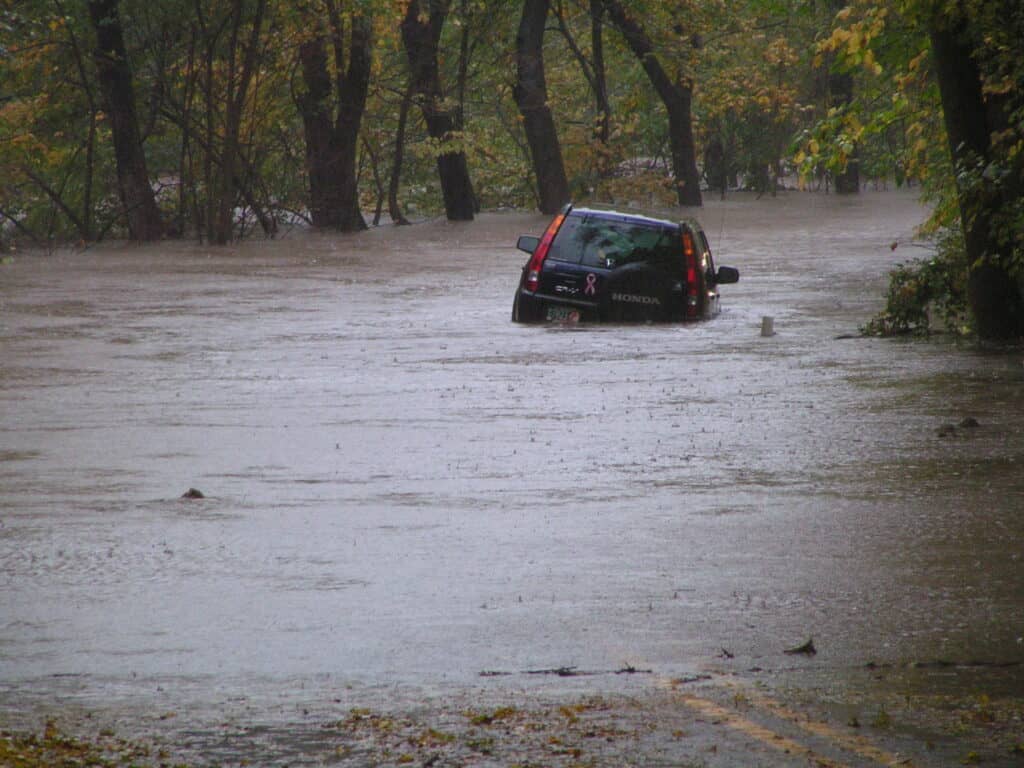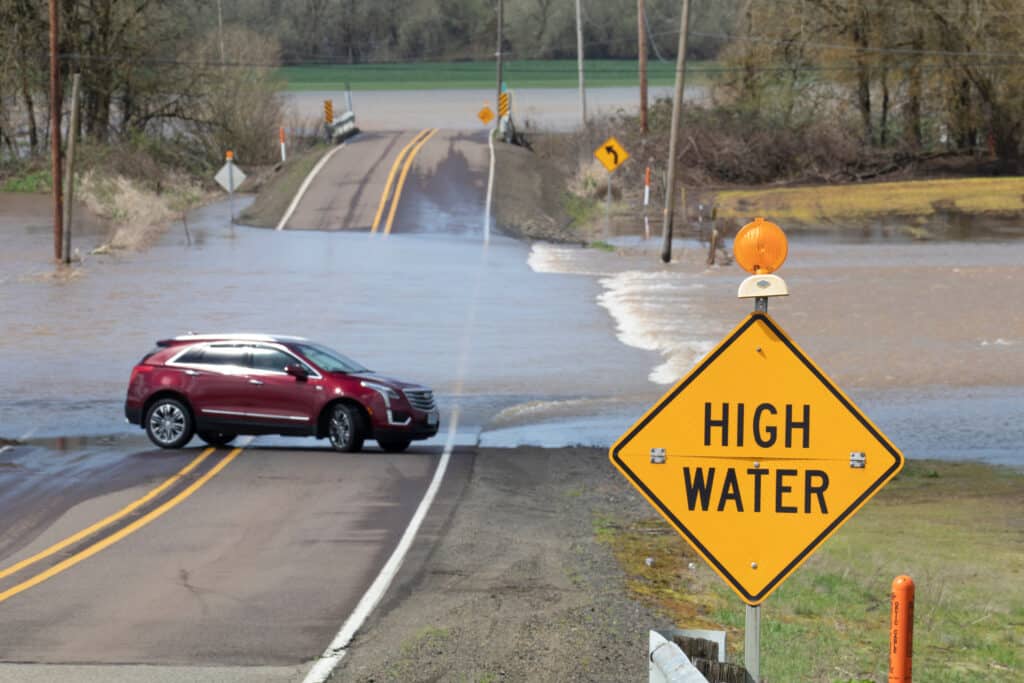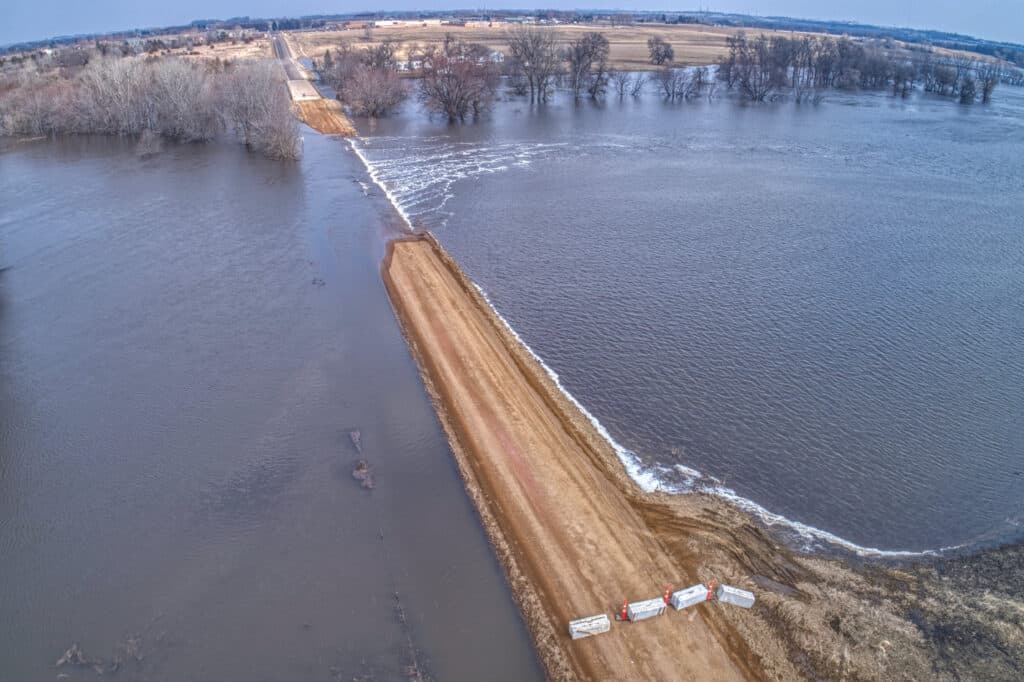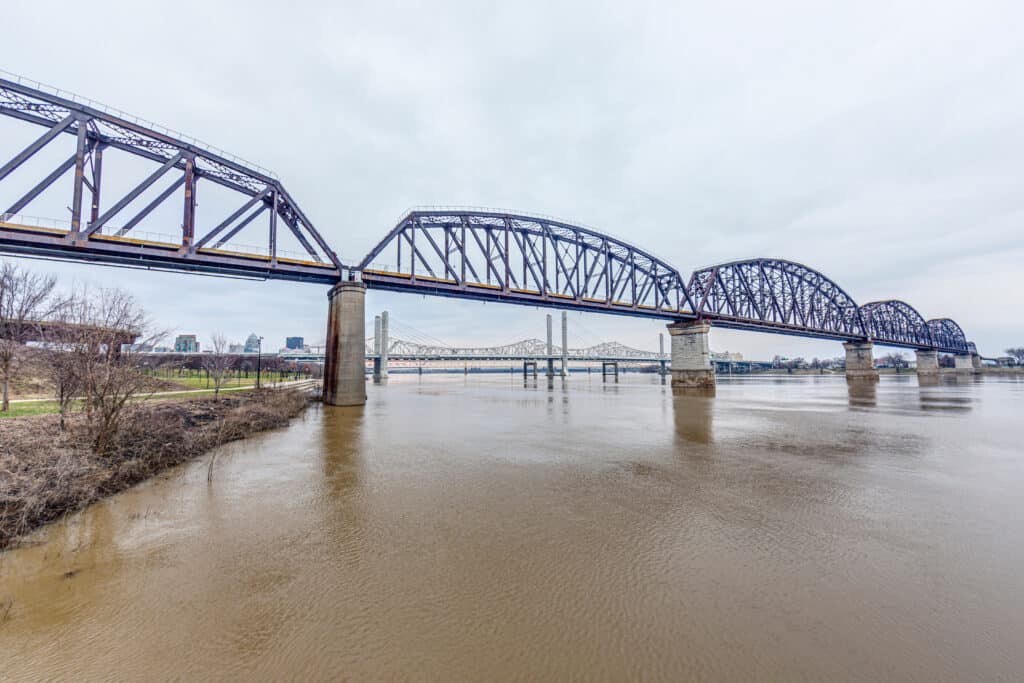Flooding that begins within three to six hours of heavy rainfall or during similar events can be classified as a flash flood, according to the National Weather Service. Several factors can precede the worst flash floods, but the most common ones include extreme downpours, thunderstorms, mudslides, or dam breaks. Flash floods earned their name for their ability to happen very quickly.
Flash flood waters tend to cause a lot of damage to structures such as bridges and roadways. It is not unusual for flash floods to disrupt power and phone line operations or contaminate groundwater. A flash flood event can also make tap water unfit for consumption. The frequency of flash floods varies from one location to the other and depends on a wide range of factors. Read on to discover some states that have had the worst flash flood disasters.
Texas

Flooding in Spring, Texas, a couple miles north of Houston, during Hurricane Harvey in 2017.
©MDay Photography/Shutterstock.com
Texas is often called the flood alley, with Central Texas, in particular, being famous for severe flooding. Many of the most severe flooding events in history have occurred in Texas. One of its record-breaking flooding events took place in October 1998. The storm that triggered the flood was one of the costliest in the recorded meteorological history of America. Thirty-one people drowned in the flash flood, with over 750 million dollars in damages.
In 2017, Hurricane Harvey dealt a devastating blow to Southeast Texas. Between August 26th to 30th, slow-moving storms contributed to a destructive flood, with the city of Nederland, Texas, receiving more than 60 inches. The resulting flood destroyed more than 200,000 homes in the region, displacing more than 30,000 people.
Pennsylvania

Flooding of the Perkiomen Creek in Pennsylvania.
©BONNIE WATTON/Shutterstock.com
The State of Pennsylvania is no stranger to floods. In 1977, the region suffered a torrential downpour that flooded several cities and swept away 85 people after the dams failed.
Again on May 31, 1889, the state witnessed one of the deadliest flash floods in history. The residents of Johnstown, Pennsylvania, were alerted to the thunderous roar that ushered in the most devastating flood of the nineteenth century. Johnstown and a large part of Pennsylvania are located on a floodplain. The city of Johnstown had a 72-foot dam on the little Conemaugh River, the largest earthen dam in the US at the time. The dam was a part of an extensive canal system that became obsolete and forgotten as the railroads replaced it. As the canal stayed unused, the dam was equally neglected.
Over the years, the people of Johnstown had been warned that they were at risk of flooding if they did not attend to the dam. On May 31, the dam eventually broke and sent 20 million tons of water crashing down. A massive wave engulfed the town in 57 minutes. Overall, the flood killed 2209 people, and several others went missing. The Johnstown flood became the first major test for the Red Cross. It still serves as a viable lesson that teaches the dire consequences of neglecting and disregarding the principles of engineering and hydrology.
Oregon

Flash flooding of a street in Shedd, Oregon.
©Catherine Avilez/Shutterstock.com
In Oregon, flooding is most common from October through April. During this period, storms from the Pacific Ocean cause intense rainfall that soon develops into floods. Sometimes the flooding can be aggravated when snowmelt accompanies the rains. One of the most memorable flash floods in Oregon occurred in 1903.
On June 14, 1903, a flash flood destroyed a better part of Heppner’s residential and business areas. Newspaper reports varied in their casualty count. While some reported 500, others reported 247 or 251. The flood caused over 600,000 dollars in damages, worth over 17 million dollars today.
In 1983, the city authorities constructed a dam above to protect Heppner from events like this. Nevertheless, the 1903 event remains the deadliest natural disaster in Oregon, and the second deadliest in the US, behind the Johnstown flood. Also, several other notable flash flooding events have occurred in other parts of Oregon. These include the Vanport Memorial Day flood of 1948, the December 1964 Christmas flood, and the February 1996 flood, among others.
South Dakota

A road in Big Sioux Recreation Area in South Dakota after having flooded during the spring melt.
©Jacob Boomsma/Shutterstock.com
South Dakota has had significant floods over the years, but the Rapid City flash flood of 1972 is one of the most memorable ones. In the summer of 1972, the residents of South Dakota suffered the black hills flash flood. It commenced around 3:00 pm on June 9, 1972, with rain coming down at the rate of two inches per hour in some regions like Piedmont and Hermosa. As the storm swept from north to south through the black hills, the Rapid City Creek dam failed, and by evening, the mayor was notified of the imminent flood. Soon, the Canyon Lake dam also broke, engulfing Rapid City in overwhelming floodwaters. The flood continued into the following day, destroying 1,335 homes and 5,000 automobiles. The cost of damages caused rose to 160 million dollars, equivalent to 940 million in today’s dollars. Two hundred thirty-eight people lost their lives in the flood.
Kentucky

A view of the Big Four Bridge over the Ohio River in Louisville, Kentucky.
©Stephan Langhans/Shutterstock.com
Kentucky has dry areas that receive heavy precipitation. When the ground is too dry, it absorbs rain very fast, so the water runs over land, flooding quickly and destroying everything in its path. The massive flood of early 1957 in eastern Kentucky and the areas of Appalachia held a top record for decades. Rain fell for sixty hours over a period of two days.
In the summer of 2009, Louisville, Kentucky, experienced record-breaking rains in Jefferson county. The flood marked the third major natural disaster to strike the region in under a year. According to reports, up to six inches of rainfall fell in an hour in some parts of Louisville, breaking all previous rainfall records. The torrential downpour hit New Albany, Jeffersonville, and Clarksville with water depth that surpassed four feet, causing the rainfall to be declared a flash flood emergency.
The flash flood damaged the offices of the National Weather Service and the WDRB news studio. In addition, the University of Louisville suffered 15 million dollars in damages, while the Louisville public library suffered a million dollars in damages. Emergency workers rescued about 200 people from the tops of buildings and cars. Luckily, there were no fatalities or injuries.
More recently, on July 28, 2022, another historic flood occurred in Kentucky following thunderstorms in the area. The floods killed more than 44 people and destroyed thousands of houses and businesses in the region.
Conclusion
Flash floods are the most lethal type of floods, causing significant damage within a very short time. The list above covers some of the states that have suffered unforgettable flash floods in history. However, it is not an exhaustive list of areas prone to flash floods. Thankfully, more states are learning to build better resiliency and predict flash floods before they wreak considerable havoc.
Up Next…
- Discover the Mississippi River’s Greatest Flood in Recorded History
- Photos That Show Yellowstone National Park’s Devastating Flooding
- Watch An Enormous Flash Flood Form In an Instant, Carrying Thousands of Trees
The photo featured at the top of this post is © Stephan Langhans/Shutterstock.com
Sources
- My San Antonio, Available here: https://www.mysanantonio.com/news/local/history-culture/article/1998-flooding-san-antonio-south-texas-13314671.php
- Legends of America, Available here: https://www.legendsofamerica.com/johnstown-pennsylvania-flood-1889/
- History, Available here: https://www.history.com/.amp/this-day-in-history/the-johnstown-flood
- USA Today, Available here: https://www.usatoday.com/story/money/economy/2018/07/24/worst-floods-in-american-history/37070093/
- National Weather Service, Available here: https://www.weather.gov/unr/1972-06-09
Thank you for reading! Have some feedback for us? Contact the AZ Animals editorial team.






